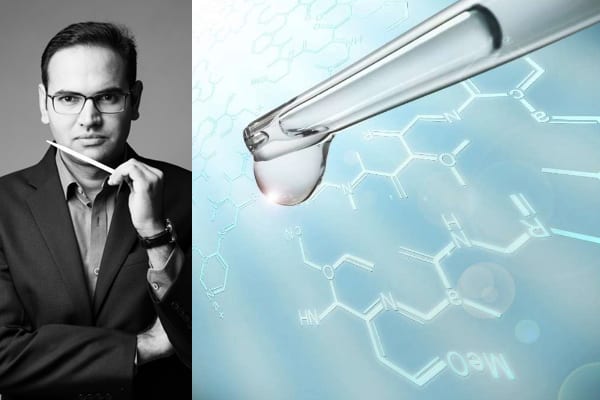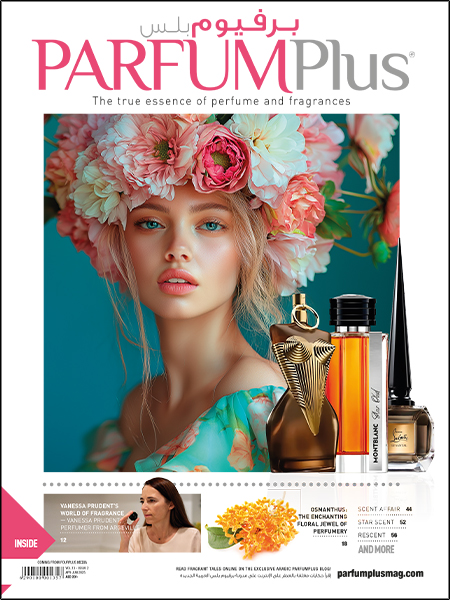Perfumery Bases : The Indispensable Perfumery Raw Material
What defines a base, and what distinguishes it from a fragrance?
A base could be an original accord of non-original raw materials (Fantasy base) or an elaboration of a strong synthetic raw material (Paramantheme based on Nonadienal, Dorinia based on Beta Damascone), often releasing a captive (Ultrazur based on Azurone) and an economical reconstitution of an expensive natural product (Black Oudh Scobase), regulatory and compliances reasons (Grisambrol based on Ambrinol) or commercially non-existing natural ingredient (Muguet 16). Ideally, a base should have a well-defined character and mission statement. It should serve a purpose and fulfil a promise when incorporated in fragrance, whether it is a building block or a top-note modifier. As a matter of fact, many of the top Bases are simplistic accords – just two or three key components combined with several basic materials. For instance, the sparkling fruity top note of Thierry Mugler’s Angel was imparted by Dewfruit Base, which is based on a captive named neocaspirene.
Bases also help in imparting “complexity” to a fragrance, and, in turn, makes it somewhat more difficult to copy per analytical means, thereby ensuring greater control over one’s formula. While there is no fixed guideline on the usage of number of bases in a compound, I personally feel that adding too many bases in a single formulation may not be advisable and may also not give the desired result. This is consistent with what Theodore Levitt said, “Anything in excess is poison”.

Bases are particularly indispensable in creating consistent and cost-effective substitutes of natural raw materials, where the quality variations and high costs limit their usage. Initially, simple accords were made as a substitute for these natural raw materials. For example, a blend of Benzyl Acetate, Amyl Cin. Ald. and Indole made a Jasmine Base; Terpineol, Heliotropin and Cinnamic Alcohol formed a Lilac Base, while Vanillin and Labdanum formed an Amber Base. However, it should be noted that no matter how technically advanced these molecules and blends are, they cannot completely replace the natural product – the complexity and enchantment bestowed to a compound via natural ingredients is singular and unmatched.
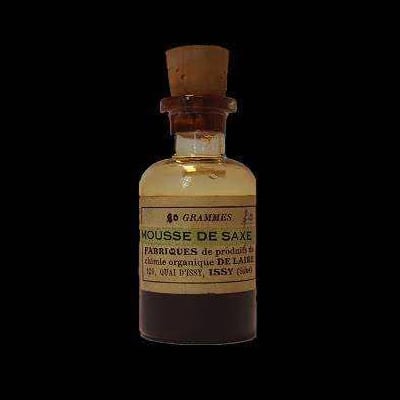
At times, the purpose of a base is not to hide a captive but to assist the perfumer in easily incorporating an overly powerful or difficult to dose chemical. These Bases are designed to help the creative perfumer in handling a tricky, high intensity raw material. A classic example is Isobutyl Quinoline, which with its extremely powerful, leathery personality was beyond the understanding of most perfumers when it was initially launched. Perfumers did not know what to do with this powerful molecule, how to dose it and how to handle it! To the rescue of perfumers came Mousse De Saxe based on IBQ and paved way for the legendary perfumes like Chamade by Guerlain (1969), Nuit de Noel (1922), and many others.
Another example would be Paramantheme based on Nonadienal – an exceptionally powerful material, which in isolation can be overpowering and difficult to dose correctly. Such potent ingredients are carefully and diligently worked upon by perfumers and AI (Artificial Intelligence) to create Bases thereby enabling easy incorporation in a formula – by novice and expert perfumers alike!
When you approach a perfumery house for the development of a fragrance for your new product launch, say a Soap or Incense Sticks, they have two possible approaches - either to start from scratch or work around a prefabricated block, a perfume Base - and modify it in accordance with the need and demand of the perfume brief, thereby expediting the development process.
The former is gaining more momentum now due to obvious advantages – speed, convenience, and modularity!
In my personal experience, I have observed that there is a misconception pertaining to the usage of bases. Some perfumers are reluctant in using them, thinking they simply are using someone else’s creation. As a matter of fact, Edmond Roudnitska, one of the greatest perfumers of all times, widely used bases in his creations. So did master perfumer Jean-Claude Ellena, mentioning Cassis Base 345 as a part of his collection in the book, “Perfume - the Alchemy of Scent”. Iconic perfumes like Chamade by Guerlain (1969), Chanel 19 (1971), and Angel by Thierry Mugler (1992) would not have existed without these Bases. Amongst other popular bases are Lilas 7 (a renowned Lilac Base) and Dianthine (based on the scent of Carnation).
Hence, perfumers must try to use a readily available Base wherever possible and avoid the temptation to work only with their creations – it saves time, and it gives the perfumer an opportunity to benefit from the experience of another expert. Even Isaac Newton thought it prudent to learn from the expertise of others when he said “If I have seen further than others, it is by standing upon the shoulders of giants” Bases provide the building blocks, the x-factor, the desired top note, that sought-after twist, and that much needed complexity to possibly defy GC-MS analysis!
Bases are not new entrants into the world of perfumery and are not necessarily complex concoctions. In fact, some of the extremely popular bases were simplistic blend of only a handful of ingredients. What sets them apart is their singular usage that overhauls the perfume in which they have been used. For example, the emblematic base Ambre 83 which defined the Amber accord, as we know today, has been used in the super successful Amber Sultan (Serge Lutens).
However, at other times, these bases can be exceptionally complex blends too, encompassing a lot of captive ingredients that have been invented by chemists and technicians working in R&D laboratories. These bases assist in ‘covertly’ releasing the captive and yet maintaining the exclusivity since perfume formulations may not be practically protected by patents. Moreover, with the help of assistance of GCMS, it is relatively easy to get the formula, which in turn can be used to produce imitations or ‘inspirations’.
However, a new molecule can be patented and protected from competitors. It makes commercial sense to release the captive in Base – because even if the customer somehow gets to know the molecule, they cannot manufacture it since it is patented and hence, obliged to buy the Base from the company that invented that molecule. For example, Ultrazur is based on captive molecule Azurone, De Laire base “Poivre Pique DL” is possibly based on Belanis. Important examples of now released captives include Hedione in Eau Sauvage (C. Dior, 1966), Moxalone in CK Be (Calvin Klein, 1996), and Dynascone in Cool Water (Davidoff, 1988) (Yes, Hedione was once a captive!)
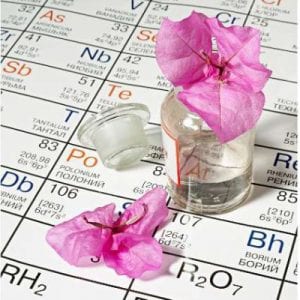
In-house bases can also be developed with the most common ingredients that form around 80% of a formula. For example, the Iso E Super–Galaxolide–Isoraldeine–Hedione accord also known as Grojsman accord, and the Lyral-Ionone-Galaxolide-Hedione accord that can form the base of countless creations – just add a bit of Melonal and it becomes a modern fruity fragrance or add a dash of Pharone and it becomes a contemporary green scent! Such bases also assist newcomers to perfumery! The perfumery base can be considered equivalent to Stock photography, Stock Template, or a prefabricated structure! Many such bases like Selvone and Althenol were created by Jean Carles, the famous Givaudan-Roure perfumer, for not only his in-house use but also for his less-experienced clients.
In a way, bases also ensure customer loyalty. Once a customer has used a perfumery base in a compound, he will continue to do so in all the future batches to ensure uniformity. The chemist can break the formula derived from GCMS analysis into different groups – for example, Benzyl Acetate, Indole, Alpha Amyl Cin Ald in a Jasmine Micro-Base while PEA and Rose Crystals in a Rose Micro-Base. Later, these individual micro-bases can be assembled into a final modular formula. Bases can also help in maintaining the secrecy of a formula within an organization. Chief Perfumer from Location A will create an X-base with the most important molecules and leave the work of adding commodities at Location B to the junior perfumer.

There is another genre of the Perfume Base where the intent is to recreate a popular fine fragrance for a functional product, say Incense Sticks. Here, the bases act as a bridge between the “desired fragrance profile” and “cost-performance ratio expectation”. As a matter of fact, in modern times, no high-class fragrance at the client specified budget is possible without the use of Bases. With the usage of Bases, we can create instantly recognizable scents such as the legendary “Chanel No.5” but without using any of the naturals used in the real version.
This is justified by Robert R. Calkin and J. Stephan Jellinek when they mention, “The average consumer of today is frequently more concerned with performance, in terms of strength and staying power, than with the beauty and subtlety of a perfume.” Perfumery bases also address the issues posed by various regulations that restrict or prohibit the use of certain ingredients by providing permissible alternatives.
Perfume Bases have also come to the rescue of Perfumers by providing them with “chemical bases” as a solution to combat the shortage and/or steep price rise in commodity as well as speciality chemicals. For example, “DHM-Base”, “Timberol-Base”, “Lyral-Base” and so on that flooded the Indian market in the recent past. Even large multinational companies were sharing “accords of chemicals” to replace chemicals in a formulation.
Also, certain commercially successful ‘speciality chemicals’ are actually ‘specialty bases’ per se. For example, a refined quality of Iso E Super called Timbersilk, possibly contains 0.07% Amber Xtreme technically making it a “Base”.
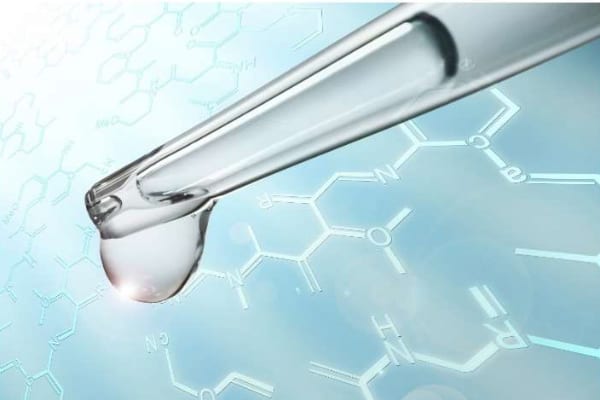
There is yet another class of Bases that does not add to the olfactory profile but rather attempts to enhance odour perception, add depth and radiance, and may improve customer acceptance. Such Bases can be considered equivalent to MSG in food! Such olfactory marvels are mostly held captives by the large MNC for their internal use, and only a handful of companies offer such innovative creations.
They add a layer of complexity, thereby making copying the fragrance through GCMS even more laborious (if not entirely impossible!).
In the recent times, Oudh-type fragrances have gained unprecedented popularity worldwide, going beyond the original hub – the Middle East and South-East Asia. It is noteworthy that Oudh is amongst the most difficult fragrances to formulate – not just in fine fragrances but also in functional fragrances. Oudh speciality Bases are being offered to the perfumers by leading companies, equipping them to formulate Oudh-based fragrances easily and confidently. For example, Black Agar Givco from Givaudan, Oudh Synth, Oudh Anokha from Firmenich, Oudh Essence from Scentography etc
Perfumery Bases are the very soul of countless classic perfumes. They continue to be widely used as they address mission-critical needs of a perfumery company.
Knowledge about the available Bases and their apt application is an essential part of a perfumer’s training. Happy blending!
Reference
1. Arcadi Boix Camps, Perfumery: Techniques In Evolution, 2000, USA, Allured Publishing Corporation
2. A.S. Barwich, Smellosophy, 2020, UK, Harvard University Press
3. Barney Shaw, The Smell of Fresh Rain, 2017, Icon Books
4. D.H. Pybus, C.S. Sell, The Chemistry of Fragrances, 1999, UK, Royal Society of Chemistry
5. Tony Curtis, David G. Williams, 2001, 2nd Edition, An Introduction to Perfumery, England, Micelle Press
6. Robert R. Calkin, J. Stephan Jellinek, 1994, Perfumery-Practice and Principles, USA, John Wiley & Sons, Inc.
7. S. Arctander, 1960, Perfume and Flavour Materials of Natural Origin, USA, Published by the Author
8. W.A. Poucher, 1993, Perfumes, Cosmetics and Soaps, Vol.2, 9th Edition, Chapman & Hall
9. Kurt Bauer, Dorothea Garbe, Horst Surburg, 2001, 4th Edition, Common Fragrance and Flavour Materials, Germany, Wiley-Vch
10. Danute Pajaujis Anonis, 1993, Flower Oil and Floral Compounds in Perfumery, USA, Allured Publishing
11. Morten C. Meilgaard et al, Sensory Evaluation Techniques, 2007, CRC Press
12. IFF Perfumers Compendium
13. Givaudan Index
14. Charles S Sell, Fundamentals of Fragrance Chemistry, 2019, Wiley-VCH
15. Firmenich Perfumery Ingredients Catalogue
16. ‘The field of Odours: Towards a universal language for Odour Relationships’’ Jean-Noel Jaubert et al, 1995, Perfumer and Flavorist
17. Harold McGee, A Field Guide to the World’s Smells, 2020, Penguin Press
Disclaimer - The information in this article is offered as an aid to the Perfumer’s creativity only and has no regulatory significance at all. This information should not be relied upon as any warranty for the ingredient’s performance in any end product. It is the perfumer’s responsibility to fully test and satisfy themselves when determining if the ingredient is suitable for use in a customer’s end product. It is recommended that the user should check the safe use with the IFRA as well as local regulatory requirements. E. & O. E.


